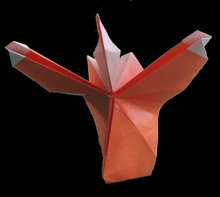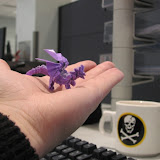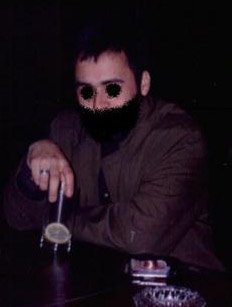
Art is a fine dialogging system between humans. Exposing a creation in which has been (deliberately or not) placed a message and a sense, makes the audience to read and translate it into its own coded experience of reality (H. Maturana says the only reality we can be sure is ours, as autopoietic, independent and isolated beings). And one of the most used mechanisms to achieve this dialog is the Representing act, which is the reproduction by a mean (visual, textual, etc) of what can be perceived as real.
In that sense, what calls our attention on a painting of a horse? What tell us that its markings are actually a horse? its standing, its attitude? That make us to remember something of the past? Or its global message, inside an scene? Or maybe its degree of realism and exactitude? What make us to experience the "click" that triggers an emotion? The act of Representing then lies on the deepest places of human’s ways of art.
And Origami is not out of this, when modular and geometric origami talks us about perfect forms, unnatural forms, or remembering the fragility of mortal and organic nature by opposition, the figurative origami exercises the representing of the daily and real nature.
So what's the figurative designer looking for? a living creature? and how does he achieve that? by reproducing an standing or attitude, by the realism or exactitude (as we said before), by any characteristic detail, like the big pincers of the crab, or the sad big eyes of the panda? It is clear to me that there are as many answers as ways to watch and observe the reality, the important thing then is to achieve the dialog. Is also clear that every designer looks for different an own objectives in the time of thinking their figure.
That was what happened in the Design Workshop that the Uruguayan Master Roman Diaz gave on Purranque 2007. The goal: To design a fish. Every attendant defined their own objectives and goals for their figure: that it should be symmetric, that it should stand like it was jumping out of the water, or that it could float for a while on water, or be a goldfish, or swordfish with its spur, etc etc. The next day we discussed about all of this, what objectives were achieved, what had to be abandoned, problems appeared for the type of base chosen for the goal.
It was clear, as Roma says in his blog entry, that experience played a fundamental part on the results obtained, the choice of a base was fundamental to get the needed paper for every part of the figure and to develop the details desired, but also that choice came with new problems and difficulties to be confronted (I remember a base, fish base I guess , chosen for a swordfish, which made impossible to get a symmetric double pointed fish tail). Details as the color changes or variation on the folds were discussed in the group and teached us the importance of the second and third lecture of a finished prototype, making the design process a living, evolutioning, dynamic, and group-able activity.
Work from the heart of the figure towards the outside and, if the forced changes made to lose the main goals and objectives, start again and test a different base. This could be done until the point where one works only with Crease Patterns on his head, and knows what geometry could allow the presence of a head, a dorsal flap, an ellipsoid and moving body, or that extra paper for the gills. A level that Nicolas Gajardo, young wonder of Origami Chile, seems to be achieving.

Another fantastic example was given by Polo Madueño (Argentina, in first picture to the left), who, while we were talking, took his objective's sheet of paper and improvised a great fish mask, really simple, really expressive, so suggesting that it made unnecesary any further detail or realism to look at it as a real fish, ready to jump on our face and talk us about its home at the bottom of the sea. If we play attention, it is possible to read every one of his objectives:
Oval body Long flaps Pointy tail Big eyes With volume Open mouth

amazingly, his figure achieved almost all of them, and the result was an unique piece of improvisation and elegance. An style that now look to me as one very interesting and deep from an artistic point of view.
I left the workshop with the feeling that design is not an impossible goal, or a permanently postponed one, and that for reaching it is necessary to fold a large number of figures, study the CPs and confront it like an test and essay process, which demands a good dose of patience and will; so sad that I could assist only as a listener, since I've missed the first session. But maybe was a good thing, time will come to think in my own designs.















